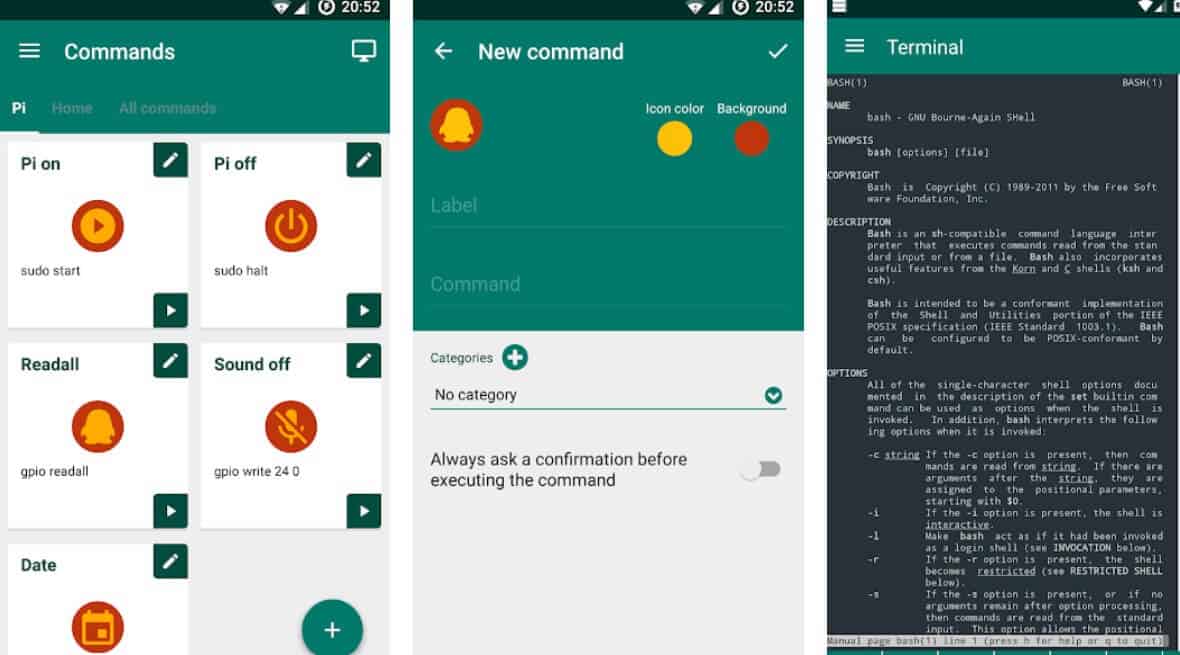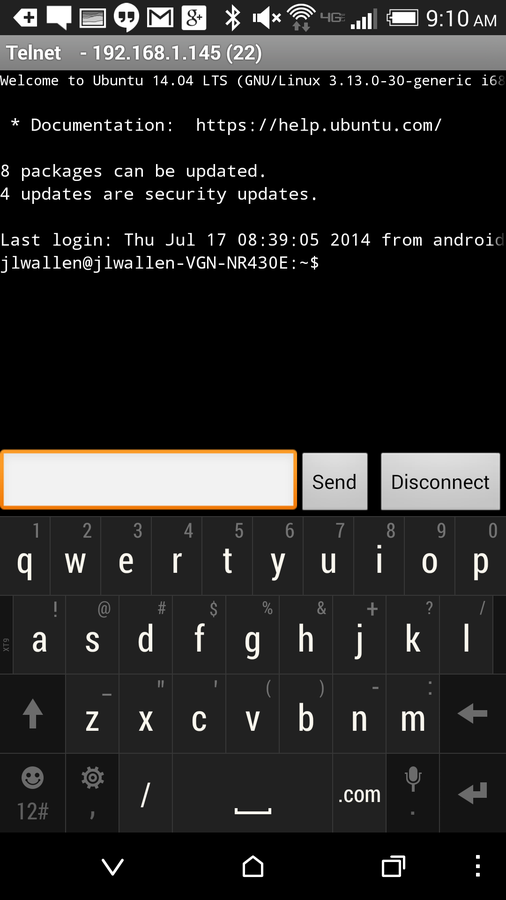Unlocking The Power Of RemoteIoT Device SSH Android
Hey there tech enthusiasts! Are you ready to dive into the world of remote access? If you're exploring how to connect to a remoteIoT device via SSH on Android, you're in for a treat. In this article, we're going to break it all down for you step by step. Whether you're a seasoned pro or just starting out, understanding remoteIoT device SSH Android can revolutionize the way you manage your IoT devices. So, buckle up and let's get started, shall we?
RemoteIoT device SSH Android isn't just a tech buzzword; it's a game-changer for anyone working with IoT systems. Imagine being able to control and monitor your devices from anywhere in the world, all from your Android smartphone. This capability opens up a world of possibilities, from home automation to industrial IoT applications. And hey, who wouldn't want that kind of power in their pocket?
But before we go too far, let's set the stage. In this article, we're going to cover everything you need to know about remoteIoT device SSH Android. We'll explore the basics, the tools you need, and some advanced tips to make the most of your setup. By the end of this, you'll have the knowledge and confidence to start managing your IoT devices like a pro. So, let's get to it!
Read also:Gia Zavala Damon Rising Star In The Spotlight
Understanding RemoteIoT Device SSH Android
First things first, what exactly is SSH? SSH, or Secure Shell, is a cryptographic network protocol that allows you to securely connect to remote devices over an unsecured network. It's like having a secret tunnel that keeps your data safe from prying eyes. Now, when we talk about remoteIoT device SSH Android, we're referring to the process of using SSH to connect to an IoT device from an Android device. Simple, right?
But why is this important? Well, in today's connected world, IoT devices are everywhere. From smart home gadgets to industrial sensors, these devices generate a ton of data. Being able to access and manage them remotely is crucial for efficiency and convenience. And with SSH, you can do just that, all while keeping your data secure.
Why Use SSH for RemoteIoT Device Management?
There are plenty of reasons why SSH is the go-to method for remoteIoT device management. First off, it's secure. Unlike other protocols, SSH encrypts all data transmitted between your Android device and the IoT device. This means that even if someone intercepts your connection, they won't be able to make sense of the data.
Secondly, SSH is versatile. It allows you to perform a wide range of tasks, from running commands to transferring files. And the best part? It's supported by a wide range of devices and platforms, making it a universal solution for remote access.
Tools You Need for RemoteIoT Device SSH Android
Alright, now that we understand the basics, let's talk about the tools you'll need to get started with remoteIoT device SSH Android. The good news is, you don't need much. Just your Android device and a few apps, and you're good to go.
One of the most popular apps for SSH on Android is Termius. It's user-friendly and packed with features that make remote access a breeze. Another great option is JuiceSSH. Both apps are available on the Google Play Store, so you can download them in just a few taps.
Read also:Lelasohna Erome The Rising Star Redefining Digital Entertainment
Setting Up SSH on Your IoT Device
Before you can connect to your IoT device via SSH, you'll need to set it up. This usually involves enabling SSH on the device and configuring it to accept remote connections. The exact steps will vary depending on the device, but generally, you'll need to:
- Enable SSH in the device settings
- Set a strong password or use key-based authentication
- Note the device's IP address
Once you've done that, your device will be ready to accept SSH connections from your Android device.
Connecting to Your RemoteIoT Device via SSH
Now for the fun part – connecting to your remoteIoT device via SSH. With your Android device and SSH app ready, and your IoT device set up, the process is straightforward.
Open your SSH app and create a new connection. You'll need to enter the IP address of your IoT device, the username, and the password or key you set up earlier. Hit connect, and voila! You're now connected to your IoT device via SSH.
Tips for a Smooth Connection
Here are a few tips to ensure a smooth connection:
- Make sure your Android device and IoT device are on the same network
- Use a strong and stable internet connection
- Regularly update your SSH app and IoT device firmware
These tips will help you avoid common connection issues and ensure a seamless experience.
Advanced Features of RemoteIoT Device SSH Android
Once you've got the basics down, it's time to explore some advanced features of remoteIoT device SSH Android. Did you know you can automate tasks using SSH scripts? Or that you can set up port forwarding to access services on your IoT device securely?
These features can take your remoteIoT device management to the next level, allowing you to streamline your workflows and increase productivity. And the best part? They're not as complicated as they sound. With a bit of practice, you'll be using them like a pro in no time.
SSH Scripts for Automation
SSH scripts are a powerful tool for automating repetitive tasks. Whether it's running a series of commands or transferring files, SSH scripts can save you a ton of time and effort. All you need is a text editor and a bit of creativity.
For example, you could write a script to automatically back up your IoT device's data or monitor its performance. The possibilities are endless, and the more you experiment, the more you'll discover.
Security Best Practices for RemoteIoT Device SSH Android
Security is always a top priority when it comes to remote access. While SSH is inherently secure, there are still steps you can take to further protect your remoteIoT device SSH Android setup.
First off, always use strong and unique passwords. Better yet, use key-based authentication, which is much more secure than password-based authentication. You should also regularly update your SSH app and IoT device firmware to protect against vulnerabilities.
Monitoring and Logging SSH Connections
Another great security practice is monitoring and logging SSH connections. This allows you to keep track of who's accessing your IoT device and when. Most SSH apps have built-in logging features, so it's just a matter of enabling them.
Regularly reviewing these logs can help you detect and respond to any suspicious activity, ensuring the security of your remoteIoT device SSH Android setup.
Real-World Applications of RemoteIoT Device SSH Android
So, how exactly can you use remoteIoT device SSH Android in real-world scenarios? The applications are vast and varied. From managing smart home devices to monitoring industrial sensors, the possibilities are endless.
For example, if you're a homeowner with a smart home setup, you can use SSH to remotely control and monitor your devices. Or if you're an engineer working with industrial IoT systems, SSH can help you manage and troubleshoot your devices from anywhere in the world.
Success Stories
There are plenty of success stories out there of people and businesses using remoteIoT device SSH Android to improve their operations. One such story is of a small business that used SSH to remotely manage their IoT-based inventory system. This allowed them to reduce downtime and increase efficiency, ultimately leading to cost savings and increased profits.
Another example is a tech enthusiast who used SSH to automate his smart home setup. By writing SSH scripts, he was able to automate tasks like turning off lights and adjusting thermostats, making his life easier and more convenient.
Troubleshooting Common Issues
Even with the best tools and practices, things can go wrong. But don't worry, we've got you covered. Here are some common issues you might encounter with remoteIoT device SSH Android and how to fix them.
One common issue is connection problems. If you're having trouble connecting to your IoT device, check your internet connection, ensure both devices are on the same network, and verify the IP address and credentials you're using.
When All Else Fails
If you've tried everything and still can't connect, it might be time to seek help. Check the documentation for your SSH app and IoT device, or reach out to their support teams. Chances are, someone else has encountered the same issue and found a solution.
And remember, don't be afraid to experiment and try new things. Sometimes, the best solutions come from trial and error.
Conclusion
Well, there you have it – everything you need to know about remoteIoT device SSH Android. From understanding the basics to exploring advanced features, we've covered it all. By now, you should have a solid understanding of how to use SSH to connect to and manage your IoT devices from your Android device.
So, what are you waiting for? Go ahead and give it a try. And don't forget to share your experiences and tips in the comments below. Who knows, you might just inspire someone else to take the leap into the world of remoteIoT device SSH Android.
Table of Contents
- Understanding RemoteIoT Device SSH Android
- Tools You Need for RemoteIoT Device SSH Android
- Connecting to Your RemoteIoT Device via SSH
- Advanced Features of RemoteIoT Device SSH Android
- Security Best Practices for RemoteIoT Device SSH Android
- Real-World Applications of RemoteIoT Device SSH Android
- Troubleshooting Common Issues
- Conclusion
Remember, the world of IoT is vast and ever-evolving. Keep learning, keep experimenting, and most importantly, have fun!
Sources:


